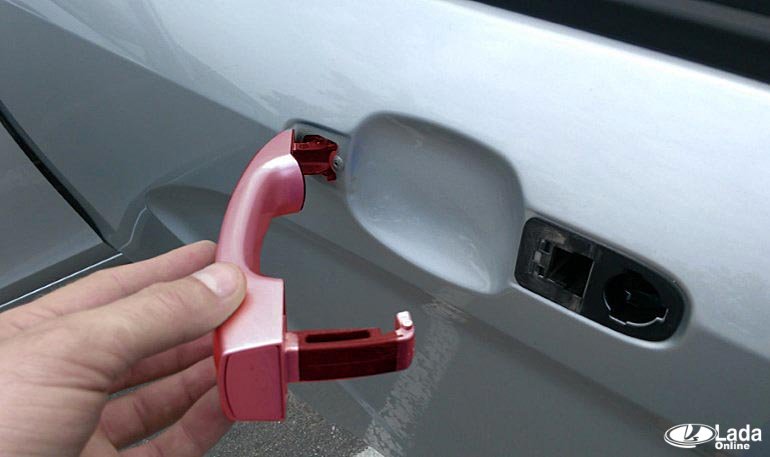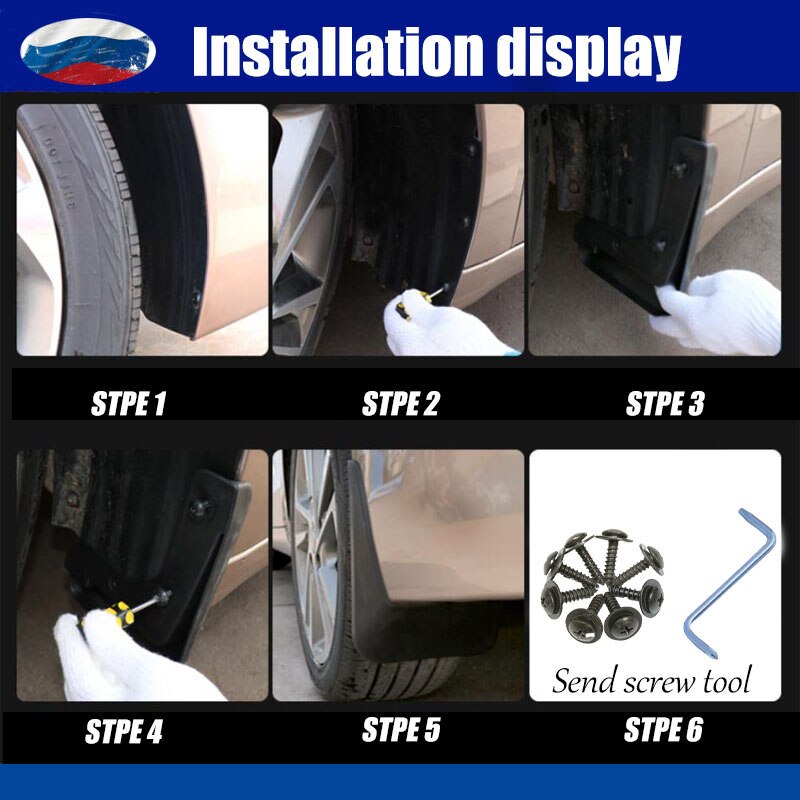
How to replace a car exterior door handle
Car exterior door handles are used so often that they can sometimes fail. Door handles must be replaced if they are loose or remain locked.
If you've had a car for a while, you probably don't think too much about your car's doorknob - until one day you grab the doorknob to get in and it feels "off". You can't pinpoint it, but it just doesn't feel right. The handle seems to work, but the door seems to be still locked.
Naturally, you pull the key or the remote control several times, but this does not help - it's as if you are locked in your own car. You try another door, or even a back door, and it works. Big! You can get in your car, but you'll have to climb over the center console or even the back seat to get in and drive! It's obscene at best, and near impossible at worst, but at least you can get in your car and drive home.
The driver's door handle may not always be the handle that comes first - sometimes it's the inside door handle - but since it's the most operated door, it usually is. Most of these pens are made of plastic or cheap cast metal, and after so many operations, the working end, the part you can't see, eventually cracks and then breaks off.
The procedure for replacing a handle varies from car to car, and some even require the removal of the inside of the door, but many can be easily replaced from the outside of the door with just a few procedures.
Part 1 of 1: Car Door Handle Replacement
Necessary materials
- Artist's ribbon
- crosshead screwdriver
- Door handle replacement
- Socket wrench set (drive 1/4)
- Screw bit Torx
Step 1: Buy a new doorknob. Before you start taking apart anything, it's a good idea to have a replacement door handle on hand. This allows you to study the handle and understand a little about how it is attached. There may be clasps at one or both ends.
If your vehicle has automatic door locks, small levers or even electrical connections may be required if the vehicle is equipped with a security system.
By looking at how the fasteners are attached, you can determine if they can be removed from the outside of the door, or if you need to work from the inside of the door. If this needs to be worked on from the inside, that is beyond the scope of this article.
Ask your parts specialist if the handle comes with a lock cylinder - if so, you need to make a decision: Do you want a separate key to operate this door? Or you want to still be able to use your old key. In most cases, you can have the cylinder tied to your existing key by providing your vehicle's serial number, but this usually takes longer than shipping a handle with your own lock and a pair of keys.
If the lock cylinder is in good condition, it is sometimes possible to change the old lock for a new one.
Step 2: Find the mounts. In most cases, the clasp is in the door jamb just around the corner from the door handle. Sometimes it's in plain sight, often hidden behind a plastic plug or piece of sealant, but it's usually not hard to find.
In many cases, this will be the only clasp used; others may have a screw on the front end. You can tell by looking at the replacement handle.
Step 3: Apply masking tape. Before we go any further, it's time to wrap the doorknob with masking tape. This will help you get the job done without scratching the paint. Use a good quality tape that can be easily removed to protect the finish.
Now it's time to break out the screwdriver, socket set or Torx screwdriver to remove the bolt(s). Once removed, the handle can be moved back and forth.
Step 4: Remove the door handle. Slide the door handle towards the front of the vehicle, then the back of the handle can be folded away from the door.
When this is done, the front of the handle will move freely and can be pulled out of the door in the same way.
At this point, any mechanisms that need to be disabled will be apparent.
There may be a small pair of alarm wires or a plastic rod attached to an automatic door lock. In most cases, they can simply be removed with your fingers.
Step 4: Switching the lock cylinder. If you've decided to replace your old lock cylinder, now is the time to do so. Insert the key into the lock and unfasten the clasp at the end holding it in place. There may be a clock spring and other devices.
Carefully remove the key cylinder and insert it into the new handle.
- A warning: Don't remove the key until the lock is in place - if you do, tiny parts and springs will fly all over the room!
Step 5: Install the door handle. Make sure all the rubber grommets are in place and insert the small end (front) of the doorknob into the slot first and then start inserting the large end.
Connect all links or electrical connections and insert the handle into the slot.
Looking through the hole, you should be able to see the mechanism that the handle should engage with. You may need to pull the lock or trigger to get the latch to engage the mechanism while you insert the handle.
Step 6: Install Mounts. Insert the fastener into the door jamb first, but don't tighten it yet. Check and make sure the handle fits snugly on the door. If there is a clasp on the front, install it now, but don't tighten it yet.
Tighten the fastener on the door jamb first, then any other fasteners can be tightened.
Try out the doorknob, check the lock, and check the alarm to make sure everything is connected properly. Once you're sure the job is done, be sure to replace the plastic plugs that covered the holes.
Replacing the doorknob on the outside is not a bad job, but like many people, you may simply not have the time. Or you may find yourself driving a car whose door handle needs to be replaced from the inside, which can be a daunting task for even the most experienced mechanics. Either way, you can always call your mechanic and have the job done comfortably at home. door handle replacement.
